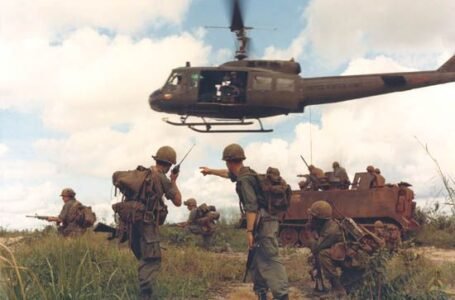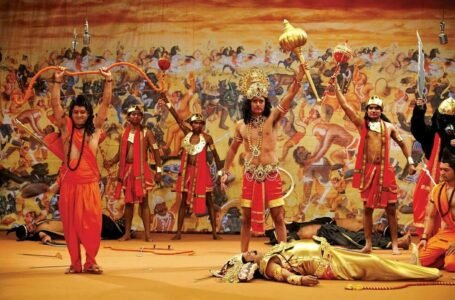The Soul Beneath the Uniform: Why Regimental Traditions Matter in the Indian Army

-Arushi Kastwar
In the Indian Army, regimental traditions are far more than ceremonial formalities or pageantry—they are the very essence of what gives a military unit its heart, spirit, and cohesion. These traditions carry with them the weight of history, the pride of generations, and the values that soldiers live and die for. They are the glue that binds individuals into a unified force, transforming a collection of men and women from diverse backgrounds into a single, indomitable fighting unit.
India’s regimental system is deeply rooted in its colonial past, inherited from the British Indian Army, which organized units based on class composition—ethnic, regional, or caste-based groupings that fostered strong internal bonding. While the Indian Army has modernized and restructured post-independence, many regiments have retained their distinct identities and preserved the traditions that have become synonymous with their name. These customs are passed down like sacred knowledge, from one generation to the next, imbuing each new recruit with a sense of belonging and a deep respect for those who came before.
Traditions in the Indian Army are reflected in everything from regimental insignia, mottos, and war cries to the way anniversaries, victories, and sacrifices are commemorated. These elements are not just for show—they are daily reminders of the regiment’s heritage and values. For instance, the Rajput Regiment’s war cry “Bol Bajrang Bali ki Jai” invokes divine strength and reflects the warrior spirit of its troops. Likewise, the Sikh Regiment draws immense pride from its historical legacy of valor and martyrdom, linking today’s soldiers to legendary figures like Guru Gobind Singh and the soldiers of the Anglo-Sikh wars.
Such traditions do more than just instill pride; they build morale and mental toughness. When a soldier yells a regimental war cry before charging into battle, it’s not just about courage—it’s about identity. It’s a reminder that he is part of something larger than himself. He fights not only for his country, but for his regiment, for his brothers-in-arms, and for the legacy they all uphold. This emotional bond is a force multiplier in combat. It sharpens discipline, enhances trust, and reinforces loyalty—qualities essential to military success.
Moreover, in a nation as diverse as India, regimental traditions serve another crucial purpose: they create unity from diversity. The Indian Army draws its personnel from every corner of the country, representing a multitude of languages, religions, and cultures. In the barracks and on the battlefield, regimental traditions provide a common thread that overrides these differences, fostering unity without erasing individuality. They cultivate a shared ethos and a collective pride that fuels operational effectiveness and resilience under pressure.
In short, regimental traditions are not relics of the past—they are living, breathing parts of the Army’s soul. They are the silent motivators behind every act of valor and every moment of perseverance. To understand the Indian Army’s strength is to understand the power and meaning of its regimental traditions.
1. The Origins of Regimental Identity
The origins of the Indian Army’s regimental identity lie in the colonial past, specifically during the British Raj, when the British East India Company and later the Crown established a regimental structure tailored to manage and control a vast and diverse population. British military planners realized early on that organizing units based on region, ethnicity, caste, or community offered unique advantages. By grouping soldiers with shared languages, cultural backgrounds, and martial traditions, they could foster cohesion, loyalty, and discipline. This led to the formation of famous units such as the Sikh Regiment, the Gurkha Rifles, the Rajput Regiment, and the Jat Regiment—each with its own distinct identity, recruitment pattern, and internal culture.
These regiments were not only military formations but also carriers of cultural pride and martial heritage. The British institutionalized traditions, uniforms, customs, and battle honors specific to each unit, giving rise to strong intra-regimental loyalty and a deep sense of pride in their unique histories.
After India gained independence in 1947, there was a concerted effort to nationalize and integrate the armed forces. However, rather than dismantling the regimental system entirely, Indian military leaders chose to preserve it—recognizing its value in promoting morale and unit cohesion. The newly formed Indian Army retained the names, insignias, and war cries of many colonial-era regiments, while reinterpreting their legacies through a nationalistic lens.
This continuity of regimental identity has had lasting benefits. It has enabled the Army to maintain a deep-rooted esprit de corps and fostered an enduring sense of belonging among soldiers. Young recruits do not just join the Army—they become part of a lineage. They are inducted into a living tradition, where they inherit not just uniforms and weapons, but stories, values, and a code of honor that defines their regiment’s soul.
2. Traditions as a Source of Cohesion
Regimental traditions in the Indian Army serve as powerful tools of cohesion, shaping a shared sense of identity and purpose among soldiers. These customs—whether in the form of war cries, unit insignias, dress codes, battle honors, or annual ceremonies—are not arbitrary. They are rooted in the historical legacy of the regiment and carry emotional and symbolic weight. Every gesture, chant, and ritual is a reaffirmation of unity.
Take, for example, the war cry of The Grenadiers regiment: “Garud Ka Hun Bol Pyare!” This cry invokes Garuda, the divine eagle from Hindu mythology, symbolizing strength, speed, and fearlessness. Shouting this together before an operation or during a parade is more than tradition—it is a rallying cry that stirs the blood, reminding soldiers of their lineage and the values they are sworn to uphold. Each regiment has a similar call that reinforces its identity, such as “Bole So Nihal, Sat Sri Akal!” for the Sikh Regiment or “Jo Bole So Nihal!” for the Punjab Regiment.
These rituals and emblems create a bond among soldiers that transcends the uniform. When a young jawan sees the insignia of his regiment or hears the regimental song for the first time, he is not just joining a unit—he is joining a legacy. This shared experience forges brotherhood, reinforces loyalty, and cultivates trust—qualities that are vital in high-stress, life-or-death situations. The confidence that each soldier has in his unit, and in his comrades, stems directly from this deep-rooted regimental identity.
Moreover, regimental traditions are critical during ceremonial occasions like Raising Days, remembrance parades, or commemorations of key battles. These events not only honor the sacrifices of the past but also reinforce the continuity of purpose and spirit in the present. They allow every soldier, from the newest recruit to the senior-most officer, to internalize their place in a continuum that stretches across generations.
3. Cultural Significance and Diversity
India’s immense cultural and regional diversity is not just a characteristic of its civilian population—it is also vividly reflected in its military, especially through its regimental system. Each regiment draws strength from a specific cultural ethos, regional heritage, or ethnic background, giving the Indian Army a unique and dynamic composition. Far from being divisive, this structure is a remarkable example of unity in diversity.
Regiments such as the Sikh Regiment, Gurkha Rifles, Rajput Regiment, Madras Regiment, and Assam Regiment are steeped in the cultural traditions of the communities they represent. They celebrate local festivals, maintain region-specific customs, and even speak dialects or languages unique to their recruitment zones. These cultural expressions foster a sense of pride among the soldiers and allow them to stay connected to their roots, even while serving far from home.
For instance, the Sikh Regiment draws heavily from Sikh martial tradition and history, with roots going back to the times of Guru Gobind Singh and the Khalsa warriors. Their valor in the Anglo-Sikh wars, both World Wars, and numerous post-independence operations is a source of immense pride. Similarly, the Gurkha Rifles, with recruits from Nepal, maintain a fierce warrior identity, shaped by centuries of martial culture, and a tradition of fearlessness and loyalty that has earned them global respect.
What makes this regimental diversity work is the Army’s emphasis on mutual respect and shared goals. While each regiment maintains its own traditions, there is no hierarchy of cultures. Whether a regiment comes from the northeast, the plains of Punjab, or the hills of Uttarakhand, all are equal contributors to the defense of the nation.
This cultural mosaic also strengthens the Army’s adaptability. Soldiers are trained to operate in different terrains and cultures, yet they bring with them the resilience, discipline, and values shaped by their own backgrounds. This makes the Indian Army not only diverse in composition but also rich in operational versatility and human depth.
In a country as varied as India, the regimental system allows the Army to represent the nation’s pluralism without losing coherence. It harnesses the pride of local identity while channeling it into national service. It shows that unity does not require uniformity—that strength can emerge from celebrating differences under a common flag.
4. Traditions in Modern Warfare
In an era dominated by satellite surveillance, cyber warfare, and high-tech weaponry, it might seem that old regimental customs and traditions would lose relevance. Yet, in the Indian Army, these traditions continue to play a profound role even in modern military operations. Far from being outdated, they serve as guiding principles—anchoring soldiers to a sense of identity, duty, and moral clarity in the fog of war.
One recent example is Operation Sindoor, launched in retaliation for a brutal terror attack in Pahalgam. The name “Sindoor” wasn’t randomly chosen. In Indian culture, sindoor symbolizes both sacred commitment and sacrifice—commonly associated with marital devotion, but also mourning when removed after loss. By invoking such deep emotional and cultural resonance, the operation’s name conveyed both grief and unyielding resolve. It reminded the troops—and the public—that this was not just a tactical maneuver, but a mission rooted in honor, justice, and collective mourning.
This example illustrates how regimental and national traditions are woven into the moral fabric of modern operations. War cries, regimental flags, and commemorative observances remain essential—not just for ceremonial purposes, but for the psychological strength they provide. Soldiers are often thrust into hostile, dehumanizing environments. In those moments, it’s not technology that keeps them grounded—it’s the knowledge that they are part of a legacy, part of a brotherhood bound by history and values. Tradition becomes armor for the mind and soul.
5. Challenges to Regimental Traditions
As the Indian Army continues to modernize and adapt to future threats, it faces the complex challenge of reforming without losing its soul. One of the most debated initiatives in recent years is the Agnipath scheme, aimed at recruiting short-term soldiers—Agniveers—for four-year stints. While the goal is to create a younger, leaner force, many veterans and officers have voiced concerns that this could erode the regimental identity that has traditionally taken years to build.
In the traditional regimental system, soldiers spend their careers within a single regiment, growing into its customs, stories, and ethos. This continuity cultivates deep bonds and long-term cohesion. The introduction of short-service tenures risks disrupting this fabric. There are fears that Agniveers, without extended exposure to regimental culture, may not internalize the same level of belonging or commitment.
Moreover, integrating recruits from diverse regions and backgrounds into existing regiments without sufficient time or training in regimental customs could create cracks in unit cohesion. While diversity has always been a strength of the Indian Army, it’s the carefully curated regimental traditions that transform that diversity into unity. Replacing these systems without safeguarding their cultural underpinnings could weaken morale and effectiveness in the long run.
6. Preserving Traditions Amid Change
Modernization is essential. New warfare domains like cyber defense, space strategy, and unmanned combat require a different kind of soldier, different training, and new structures. However, this evolution must be balanced with the preservation of the intangible assets that have made the Indian Army one of the most respected forces in the world—its traditions.
Preserving regimental traditions doesn’t mean resisting change. It means managing change wisely. It means ensuring that even short-service recruits are immersed in the regiment’s culture, values, and history from day one. It means maintaining war cries, dress codes, rituals, and commemorations, even as the battlefield shifts from mountains to cyberspace. The British Army, which also follows a regimental system, has successfully modernized while preserving its regimental heritage. The Indian Army can do the same, but only if it treats traditions not as optional extras, but as essential military capital.
Institutional memory, passed down through these traditions, shapes decision-making under fire. The pride that a soldier takes in wearing his regimental insignia is not something that can be downloaded into a simulator. It is earned through shared experience, reinforced through rituals, and cemented by tradition.
Conclusion
Regimental traditions are not relics of a bygone era—they are the living soul of the Indian Army. They provide more than just identity; they create cohesion, build resilience, and offer emotional and moral grounding in times of war and peace. As the Indian Army embraces future warfare and reforms its recruitment models, it must hold firm to the core values and customs that have shaped its success for generations.
Modernization and tradition are not opposing forces. When balanced wisely, they strengthen each other. The challenge lies in moving forward without losing what made the journey possible. The Indian Army’s strength has always come from its people—and the traditions that bind them. Preserving those traditions ensures that even the most modern soldier marches in step with history, honor, and heritage.


